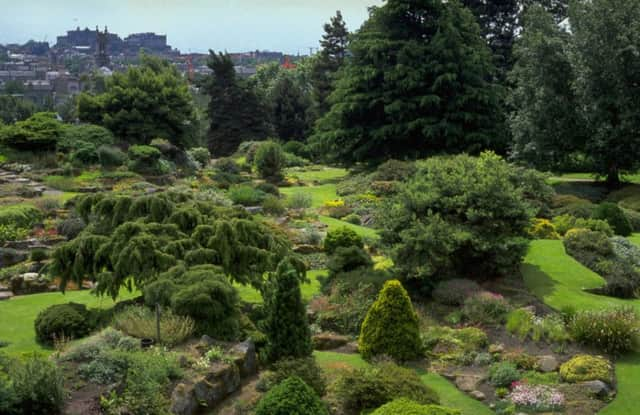Reminder of the vital work of the Botanic Garden


Between 6:30am and 7am yesterday, I had direct contact with 35 species from the world of plants – before leaving my house. From emerging from the folds of the cotton sheets, walking across the wooden floor, lathering my body with lavender soap and flossing and brushing my teeth with some minty products, to drinking tea and downing a healthy breakfast, my dependence on plants was apparent.
Meanwhile, in hospitals across the city, a more critical plant dependence was likely to be in evidence. Cancer patients being treated with an extract from yew; atropine (from deadly nightshade) administered in advance of an operation, and a compound from daffodil bulbs dispensed for treating Alzheimer’s disease.
Advertisement
Hide AdAdvertisement
Hide AdWe all know that life on Earth could not continue without the plant kingdom, but what we don’t know is which plants will come to our rescue in the future. Already two-thirds of the most commonly prescribed drugs in the United States are derived from plants and fungi. Yet, more than one-third of the world’s plant species are under threat of extinction and estimates of how much native forest is being lost vary between 45,000 and 55,000 square miles every year – an area about the size of Greece.
This results in around one billion tonnes of carbon being released into the atmosphere and an incalculable and often irreversible destruction of biodiversity. The net effect is the loss of the very natural capital that sustains us. This loss is often felt the most by indigenous populations and the world’s poorest people who, for example, rely on naturally sourced and locally gathered medicines rather than manufactured and costly healthcare products.
It is against this background that botanists strive to identify, research and conserve plants. On taking up my appointment at the Royal Botanic Garden Edinburgh, I embarked on a fascinating voyage of discovery. I saw plants in the collection that are no longer found in the wild, and preserved specimens dating from the 19th century that have long since vanished from the land. On the positive side, in the research department some of the world’s top botanists were working on joint programmes concerning the understanding and protection of the flora of countries ranging from Nepal to Columbia and the Congo to Chile, many of which are revealing new species and bringing a wide range of conservation and sustainable economic benefits.
Across the corridor, experts were focused on pioneering DNA barcoding research in partnership with colleagues around the globe, and out in the plant nursery, horticulturists were propagating and tending rare Scottish plants destined for reintroduction into the wild.
The classrooms and glasshouses were alive with adults and children, professionals and amateurs engaged with various education courses and rapidly becoming the new champions of plants and our natural heritage. A walk among the rhododendrons, alpines and on the not so manicured lawns – the badgers had had fun digging for their supper the night before – took me to some of our 700,000 annual visitors who were enjoying the beauty and inspiration of the gardens and making their way to the latest exhibition and lunch in the John Hope Gateway.
And then I met a bunch of people with contented smiles and filthy hands – who had thrown themselves into the edible garden project. This brilliant venture aims to get more people growing their own produce, and is a joint initiative between Royal Botanic Garden Edinburgh, the Scottish Allotments and Gardens Society and the People’s Postcode Lottery’s Dream Fund.
The collections, expertise and vitality of the “Botanics”, with its remarkable staff and volunteers, is extraordinary; it is a global scientific asset, a national treasure and community resource of infinite worth. It is an enormous privilege and an exciting challenge to have been appointed to be the 16th Regius Keeper.
The evolving relationship between plants and man is critical to our future wellbeing, and our work in our four Gardens – Edinburgh, Benmore, Logan and Dawyck – is as relevant to mankind now as it was when one my of illustrious predecessors, Professor John Hope, a botanist of international renown and a leading character in the Scottish Enlightenment, taught students about the emerging science of botany in the 18th century.
• Simon Milne MBE is Regius Keeper at the Royal Botanic Garden Edinburgh
SEE ALSO